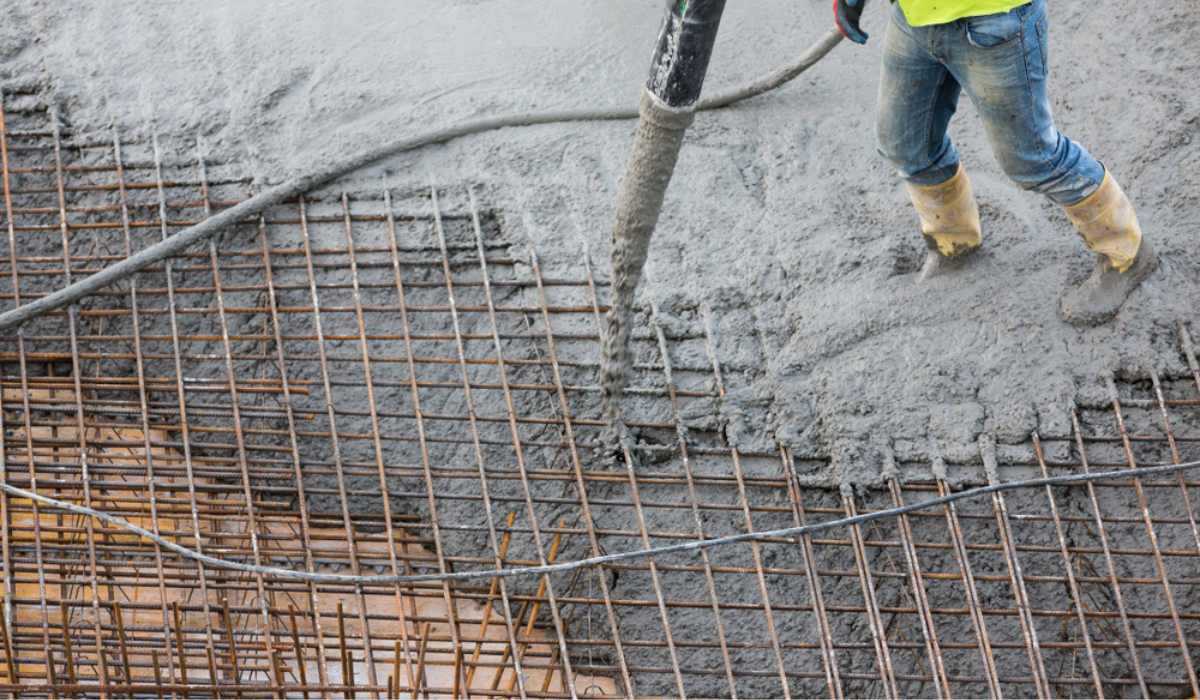Ferrocement is a thin reinforced concrete construction in which a mesh of closely spaced steel wires or rebar is coated with a cement mortar. The resulting composite material is strong, lightweight and durable, making it ideal for various applications.
Ferrocement was first developed in the mid-19th century by a French gardener named Joseph-Louis Lambot, who used it to create flowerpots and other garden ornaments. It gained popularity in the mid-20th century, particularly in developing countries, for its low cost and ease of construction. Today, it is used for many applications, including boats, bridges, water tanks, housing and sculptures.
Ferrocement is typically made by placing a steel mesh or rebar layer between two thin layers of cement mortar. The layers are built up alternately until the desired thickness is achieved. The resulting material is strong and flexible and can be shaped to fit a variety of forms.

Source: Pinterest
See also: What is cement mortar?
Ferrocement: Properties
High strength
Ferrocement is known for its high strength-to-weight ratio, making it an ideal material for structures that need to be strong and lightweight.
Durability
Ferrocement is highly durable and can withstand extreme weather conditions, making it an ideal material for construction in coastal areas and earthquake-prone regions.
Flexibility
Ferrocement is highly flexible, which means it can be easily moulded into various shapes and sizes. It makes it an ideal material for constructing complex structures such as domes, arches, and shells.
Fire resistance
Ferrocement is highly resistant to fire, which makes it an ideal material for building fire-resistant structures such as firewalls and fireproof doors.
Corrosion resistance
The steel mesh used in ferrocement is coated with a layer of zinc or other anti-corrosive material, which makes it highly resistant to corrosion and rust.
Low cost
Ferrocement is relatively inexpensive compared to other building materials, making it an ideal choice for low-cost housing and infrastructure projects.
Eco-friendly
Ferrocement is eco-friendly as it uses less cement than conventional concrete and requires less energy for transportation and construction. It is also easy to recycle at the end of its life cycle.
Ferrocement: Constituents
Constituent materials commonly used in ferrocement are:
Cement
The primary binding material used in ferrocement.
Fine aggregates
Used to reduce the cement needed and provide bulk. Typically, sand is used as a fine aggregate.
Steel mesh
Multiple fine sheets of steel or other metal mesh layers provide the composite tensile strength and reinforcing properties.
Water
Added to the mix to create a workable paste that can be moulded and shaped.
Admixtures
Used to modify the properties of the mix, such as accelerating or retarding the set time, improving workability, or increasing strength.
Fibres
Fibres such as glass, nylon, or carbon fibres can be added to the mix to improve the tensile strength and toughness of the ferrocement.
Pigments
Pigments can be added to the mix to provide colour to the final product.
Coatings
Coatings such as epoxy or polyurethane can be used to improve the durability and water resistance of the final product.

Source: Pinterest
Ferrocement: Applications
Ferrocement has a wide range of applications in various fields due to its unique properties. Some of the applications of ferrocement include:
Housing
Ferrocement is commonly used in constructing low-cost housing, particularly in developing countries.
Marine structures
Ferrocement’s high strength-to-weight ratio and durability make it ideal for use in the construction of boats, yachts, and other marine structures.
Infrastructure
Ferrocement can be used to construct bridges, culverts, water tanks, and other infrastructure projects.
Architecture
Ferrocement’s flexibility and ease of moulding make it ideal for constructing complex architectural structures, such as domes, arches, and shells.
Industrial applications
Ferrocement is also used to construct industrial structures, such as silos, chimneys, and storage tanks.
Agriculture
Ferrocement can construct small-scale agricultural structures like greenhouses and storage sheds.
Restoration
Ferrocement is often used to restore historic buildings and monuments due to its ability to conform to intricate shapes and designs.
Ferrocement: Advantages
- Most nations have easy access to basic raw constituents.
- Made to fit any required form.
- Low labour skills required.
- Low weight, simple construction, and extended lifespan.
- Inexpensive building materials.
- Greater seismic resistance.
Ferrocement: Disadvantages
- It is susceptible to piercing when it collides with sharp things.
- Corrosion of the supporting materials brought on by mortar’s insufficient metal covering.
- Bolts, screws, welding, nails, and other fasteners are difficult to use when fastening to ferrocement.
- A lot of labour is needed.
- It takes a lot of time and effort to tie rods and mesh together.
FAQs
What types of structures can be built using ferrocement?
Ferrocement can be used to build various structures, including housing, marine structures, infrastructure, architecture, industrial structures, agriculture, and restoration projects.
How is ferrocement different from traditional concrete?
Ferrocement is made with a fine mesh of steel or other metals, which provides high tensile strength and ductility, making it different from traditional concrete that lacks these properties.
What is the difference between ferrocement and reinforced concrete?
Ferrocement is a thin-walled composite material, while reinforced concrete is a thicker material with more reinforcing steel.
How is ferrocement constructed?
Ferrocement is constructed by layering the steel mesh and then applying a mixture of cement, sand, water, and other additives to create a composite material.
| Got any questions or point of view on our article? We would love to hear from you. Write to our Editor-in-Chief Jhumur Ghosh at jhumur.ghosh1@housing.com |






